1. Overview
Andrew Symonds, known affectionately as "Roy," was an Australian international cricketer who played across all three formats of the game from 1998 to 2009. Born on June 9, 1975, he became a celebrated batting all-rounder renowned for his aggressive right-handed batting, versatile bowling (alternating between medium pace and off-spin), and exceptional fielding prowess. A pivotal member of the Australian national team, Symonds contributed significantly to their back-to-back victories in the 2003 Cricket World Cup and the 2007 Cricket World Cup. He was recognized as one of the standout cricketers of his era, with Wisden Cricketers' Almanack selecting him for their ODI World XI of the 2000s.
His career, however, was also marked by disciplinary challenges, notably alcohol-related incidents that led to his suspension and eventual withdrawal of his central contract by Cricket Australia in 2009. Symonds ultimately retired from professional cricket in February 2012 to prioritize his family life. Tragically, he died in a single-vehicle car crash on May 14, 2022, at the age of 46.
2. Early Life and Background
Andrew Symonds was born in Birmingham, West Midlands, England, on June 9, 1975. His biological parents were of Afro-Caribbean and Scandinavian descent. At three months old, he was adopted by Ken and Barbara Symonds, who later moved to Australia when Andrew was a toddler. He had three siblings, including an adopted sister, Louise Symonds, who gained public recognition as a contestant on the Australian television series Gladiators in 2008.
Symonds spent his early childhood in Charters Towers, northern Queensland, where his father taught at and Andrew attended the private All Souls St Gabriels School. From a very young age, he exhibited significant sporting talent, nurtured by his cricket-enthusiast father. His father would frequently throw balls to him five or six days a week, both before and after school, and they would engage in various indoor games with everyday objects. Symonds began his junior cricket career in Townsville with the Wanderers club, a commitment that often required his father to make the 168 mile (270 km) (return) trip, sometimes twice a week.
In 1988, when Symonds was 12, his family relocated to the Gold Coast after his father accepted a deputy headmaster position at All Saints Anglican School. He continued his junior cricket at Palm Beach Currumbin. At just 15 years old, Symonds made his Queensland Premier Cricket debut for the Gold Coast Dolphins, impressively scoring a double century in his very first game.
3. Cricket Career
Andrew Symonds' cricket career was defined by his aggressive batting, versatile bowling, and exceptional fielding, which collectively established him as a premier all-rounder in the sport.
3.1. General Characteristics and Playing Style
Symonds was an aggressive right-handed batsman who could also bowl off spin or medium pace, making him a formidable all-rounder. He was particularly known for his exceptional fielding skills. A report prepared by ESPNcricinfo in late 2005 indicated that since the 1999 Cricket World Cup, he had effected the equal-fifth-most run-outs in One Day International (ODI) cricket of any fieldsman, boasting the fourth-highest success rate. Former Australian captain Ricky Ponting highly praised Symonds' fielding, rating him as the best fielder he had ever seen, and a better and more versatile one than renowned fielders like Herschelle Gibbs and Jonty Rhodes. Ponting attributed this to Symonds' taller stature (74 in (187 cm)), which provided him with superior defensive coverage range and greater throwing power from outside the fielding circle. Despite his medium-heavy build, he was remarkably agile, possessed excellent reflexes, was adept at taking catches, and had a powerful and accurate throwing arm.
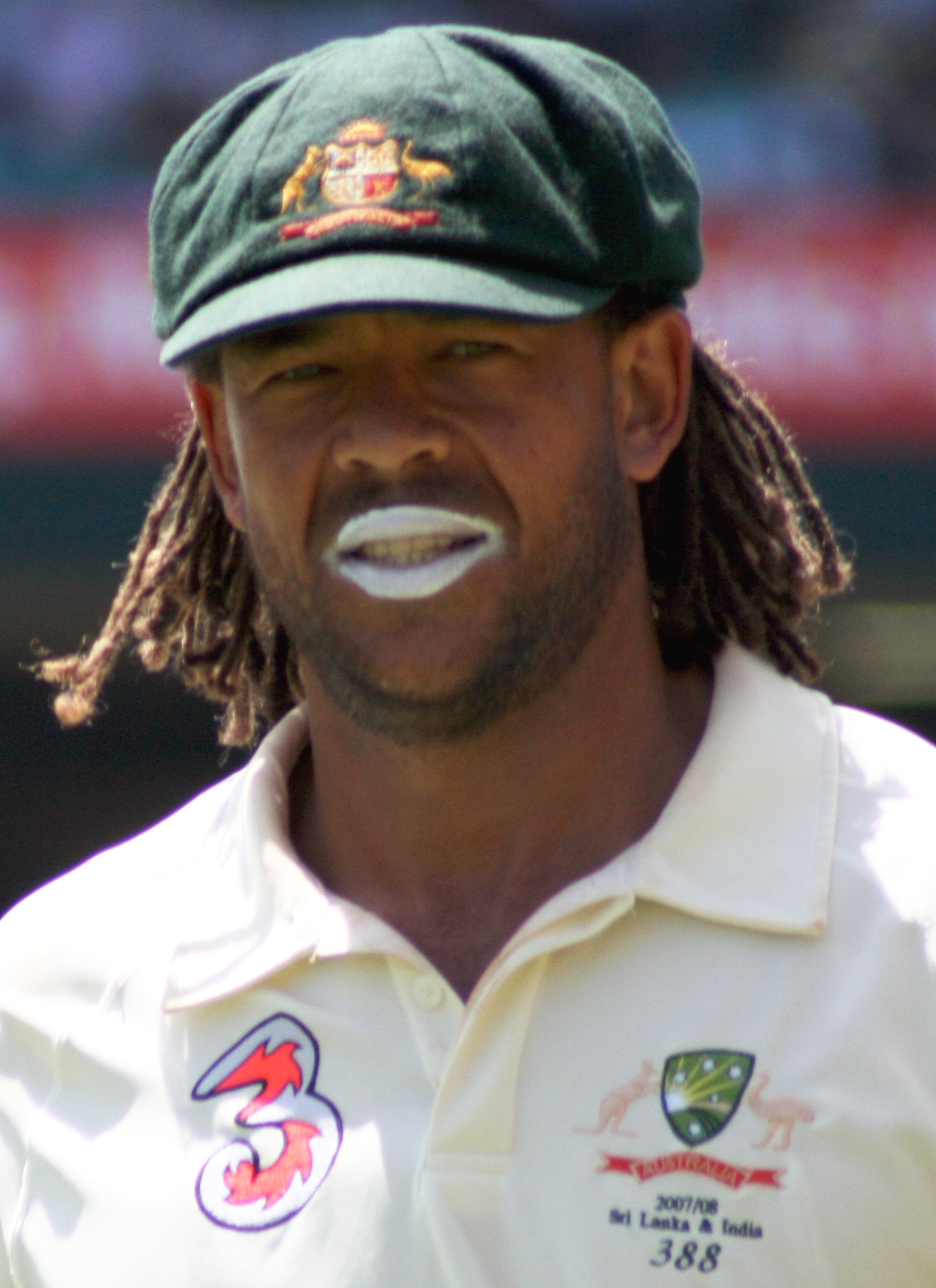
His commonly used nickname was "Roy," a shortened form of "Leroy." This moniker originated early in his career when a coach noted his resemblance to the Brisbane basketball player Leroy Loggins. In 1994, Symonds was a scholarship holder at the AIS Australian Cricket Academy, a testament to his early promise.
3.2. Domestic Career
Andrew Symonds had a prolific domestic career playing for various teams across Australia, England, and India, showcasing his all-round capabilities.
3.2.1. Australian State Cricket
Symonds made significant contributions to the Queensland state team, accumulating over 5,000 runs and taking more than 100 wickets during his tenure. He notably scored 113 runs and took four wickets in a losing effort during the final of the 1998-99 Sheffield Shield season. Furthermore, he was named man of the match in the 2002 Pura Cup final after scoring 123 runs and claiming six wickets, leading Queensland to victory.
3.2.2. English County Cricket
Symonds played for four English counties throughout his career: Gloucestershire, Kent, Lancashire, and Surrey. His first appearance for an English county was with Gloucestershire. Initially, he was considered eligible to play for England; however, after his first county season in 1995, he definitively declared his allegiance to Australia by declining an opportunity to tour Pakistan with the England A team.
In August 1995, playing for Gloucestershire against Glamorgan at Abergavenny, Symonds delivered a remarkable performance, hitting a then-record 16 sixes in his unbeaten innings of 254 runs. This feat surpassed the previous record held by New Zealand's John R. Reid. Wisden highlighted that his 16th six "landed on a tennis court about 20 ft over the boundary," acknowledging that while the short boundaries aided him, it was "a hugely effective innings on any ground in the world." This record for most sixes in a first-class innings was later equalled by Graham Napier in 2011 and stood until May 2022 when Ben Stokes hit 17 sixes. Symonds also set a record for the most sixes in a first-class match, adding four more sixes in the second innings to bring his total to 20, surpassing Jim Stewart's previous record of 17. In July 2005, he signed with Lancashire for the remainder of the English season, and in April 2010, he joined Surrey for the Friends Provident t20 competition.
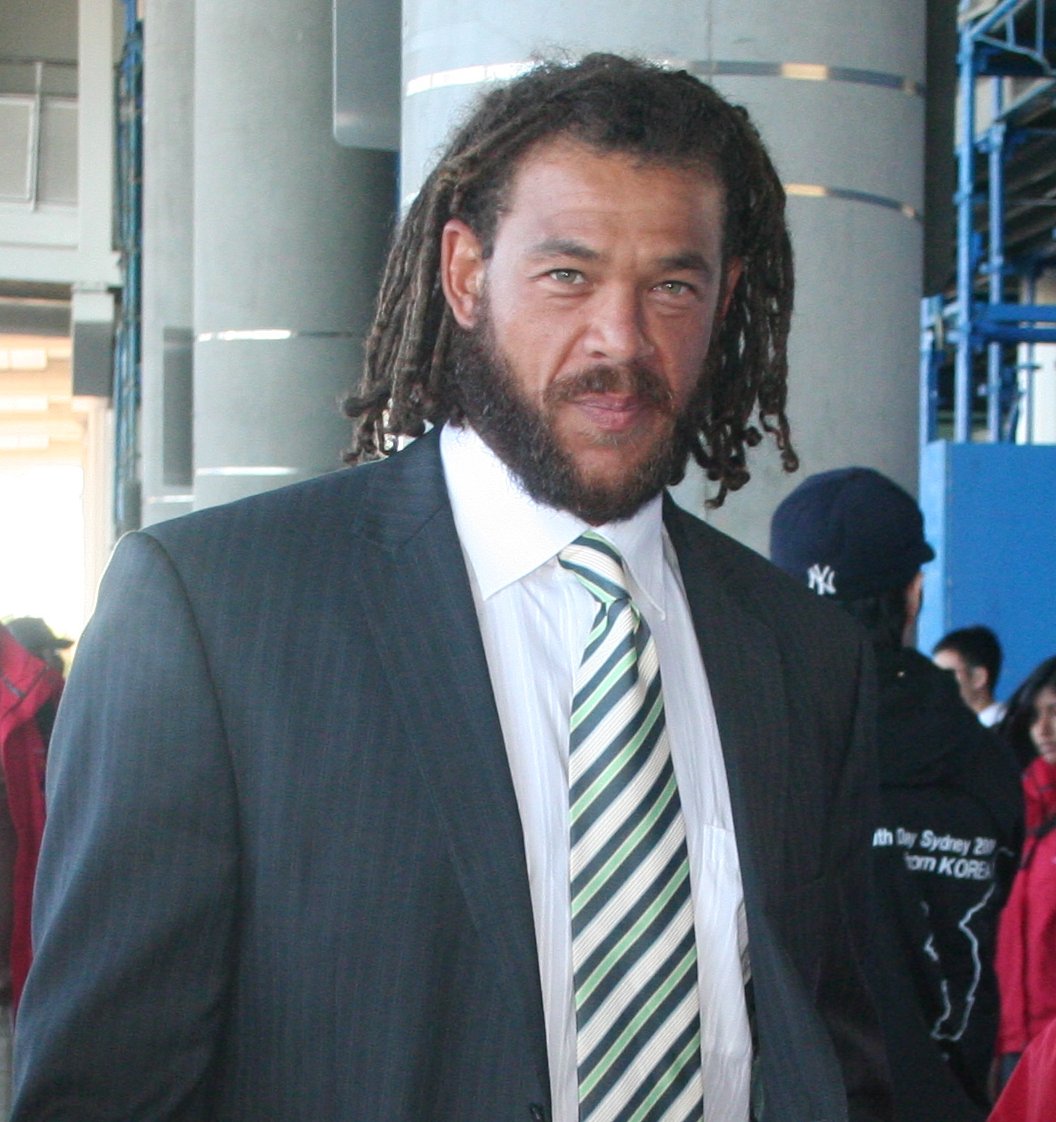
3.2.3. Indian Premier League (IPL)
In February 2008, Andrew Symonds became one of the highest-valued players in the inaugural Indian Premier League (IPL), signed by the Deccan Chargers franchise for 1.35 M USD, making him the second-most-expensive player in the league at that time. During the 2008 competition, he scored an impressive 117 not out from 53 balls against Rajasthan Royals. Despite his century, the Royals ultimately won the game, with Symonds conceding 19 runs in the final over when 17 were required to win. He started the third IPL season in 2010 convincingly, scoring two half-centuries in his first three games for the Deccan Chargers. The following year, in 2011, he was contracted by the Mumbai Indians for 850.00 K USD.
3.3. International Career
Andrew Symonds' international career was marked by his emergence as a crucial all-rounder for Australia, his significant contributions to World Cup triumphs, and later, a series of controversies that led to his retirement.
3.3.1. Early Years and 2003 World Cup
Although Symonds was originally eligible to play for England due to his birth in the country, and for the West Indies due to his ancestry, he made the decision in 1995 to pursue an international career exclusively for Australia. His international debut came on November 10, 1998, in a One Day International (ODI) match for Australia against Pakistan in Lahore. As an ODI player, he was known for his impressive strike rate of over 90, with a highest score of 156.
Initially, Symonds struggled to make a consistent impact with both bat and ball, which meant he was not a regular fixture in the Australian playing eleven, although his fielding skills were always of high quality. Despite this, he was named in Australia's squad for the 2003 Cricket World Cup. His inclusion became crucial after all-rounder Shane Watson withdrew due to injury, Shane Warne was sent home after failing a drugs test, and Darren Lehmann was serving a suspension. According to former England cricketer Adam Hollioake, Symonds' place in the 2003 World Cup squad was largely due to the backing he received from captain Ricky Ponting.
In Australia's opening match of the tournament against Pakistan, Symonds delivered a career-defining performance, scoring 143 not out. This monumental innings rescued Australia from a precarious position of 4 wickets for 86 runs, guiding them to a total of 8 wickets for 310 runs, ultimately leading to an 82-run victory. Kanta Murali of The Hindu described this performance as "one of the best knocks in one-day cricket history," and it proved to be the turning point of Symonds' career. In the semi-final against Sri Lanka, he again top-scored with 91 not out and was named Player of the Match, as Australia secured a 48-run win. Australia went on to defeat India in the final, clinching their third World Cup triumph and becoming the first team to go undefeated in an edition of the tournament. Following this breakthrough, The Age lauded Symonds as "a true one-day star," emphasizing his newfound essential role in the one-day team. During the victorious 2003 World Cup campaign, he batted in five innings, scoring 326 runs at an impressive average of 163. He was Australia's third-highest run-scorer, just behind Adam Gilchrist and Matthew Hayden, and remained unbeaten in three of his five innings, with his only batting failure being a duck against England.
3.3.2. Becoming an ODI Regular and Test Debut
Following the 2003 World Cup, Symonds solidified his position as an ODI regular. In the subsequent tour of the West Indies, he played in all seven ODIs, scoring half-centuries in the third and fifth matches. He finished the series as Australia's top run-scorer in their 4-3 series victory.
In March 2004, Symonds made his Test debut during Australia's tour of Sri Lanka. The selectors believed his bowling and power hitting against spin bowlers made him "ideal" for the subcontinent conditions. He replaced Simon Katich, who had scored a century and an unbeaten fifty in Australia's previous Test. However, playing as a specialist batsman, Symonds struggled against Muttiah Muralitharan on the dusty, turning pitches of Sri Lanka, failing to score above 25 runs in any of his four innings. Consequently, he was dropped after just two Test matches, with Katich regaining his place.
Symonds was recalled to the Test team in November 2005 for South Africa's tour of Australia, after an injury to Shane Watson, as Australia continued its search for a permanent all-rounder. After five Tests, with a batting average of 12.62 and a bowling average of 85.00, he faced considerable pressure to retain his spot for the 2005 Boxing Day Test. On the first day of that match, he was dismissed for a golden duck. However, he then took 3 wickets for 50 runs in the South African first innings, followed by a quickfire 72 runs off 54 balls in the second innings, and 2 wickets for 6 runs with the ball, showcasing his all-round ability. For his performances in 2005, the ICC named him in the World ODI XI.
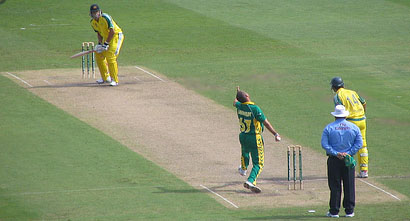
At the 2006 Allan Border Medal count, Symonds had polled the most votes for the One Day Player of the Year award but was deemed ineligible because he had been suspended due to a drinking binge during the 2005 Ashes tour. He played every ODI in the tri-nation 2005-06 VB Series. He earned Player of the Match honors twice in the group stage against Sri Lanka: once after scoring a half-century in the opening game, and again after contributing 32 runs and taking three wickets. He also scored a second half-century of 65 runs in a victory over South Africa. Having won six of their eight group stage games, Australia qualified for the best-of-three final, once again facing Sri Lanka. After losing the opening match, Symonds played a pivotal role in the second final, scoring 151 runs, including 13 fours and three sixes. He shared a massive partnership with Ricky Ponting as Australia posted their highest ever ODI score of 5 wickets for 368 runs. Symonds was named Player of the Match again. After Australia secured victory in the third and final game, Symonds was awarded Player of the Series, having amassed 389 runs and taken 11 wickets. For his consistent performances in 2006, he was named as the 12th man in the ICC World ODI XI.
In February 2006, Australia traveled to South Africa for another series. Symonds missed the first three ODIs due to injury but returned in the fourth, scoring 76 runs to help Australia chase down a target of 246 and level the series at 2-2. In the fifth and final ODI, Symonds contributed 27 not out as Australia broke the world record for an ODI score, reaching 434. However, in a match famously dubbed "The greatest the world has seen" by The Sydney Morning Herald, South Africa sensationally chased and broke the new world record, setting a new high of 438 runs with just 1 wicket and 1 ball to spare. While batting in the second Test of this tour, Symonds was struck on the helmet by a bouncer from Makhaya Ntini, requiring four stitches on the inside of his upper lip. After scoring just 101 runs and claiming only one wicket in the three-Test series, Symonds was dropped from the Test team for the subsequent tour of Bangladesh, with Michael Clarke taking his place.
3.3.3. 2007 World Cup Triumph
Following the retirement of Damien Martyn during the 2006-07 Ashes, Symonds was once again recalled to the Australian team. Although he scored only 26 and 2 runs in his first Test back, he maintained his spot for the second match. In the Boxing Day Test, Symonds arrived at the crease with Australia struggling at 5 wickets for 84 runs. After a cautious start to his innings, he went on to score his maiden Test century, forging a crucial 279-run partnership with Matthew Hayden and reaching his century with a six. Symonds was eventually dismissed for 156 runs.
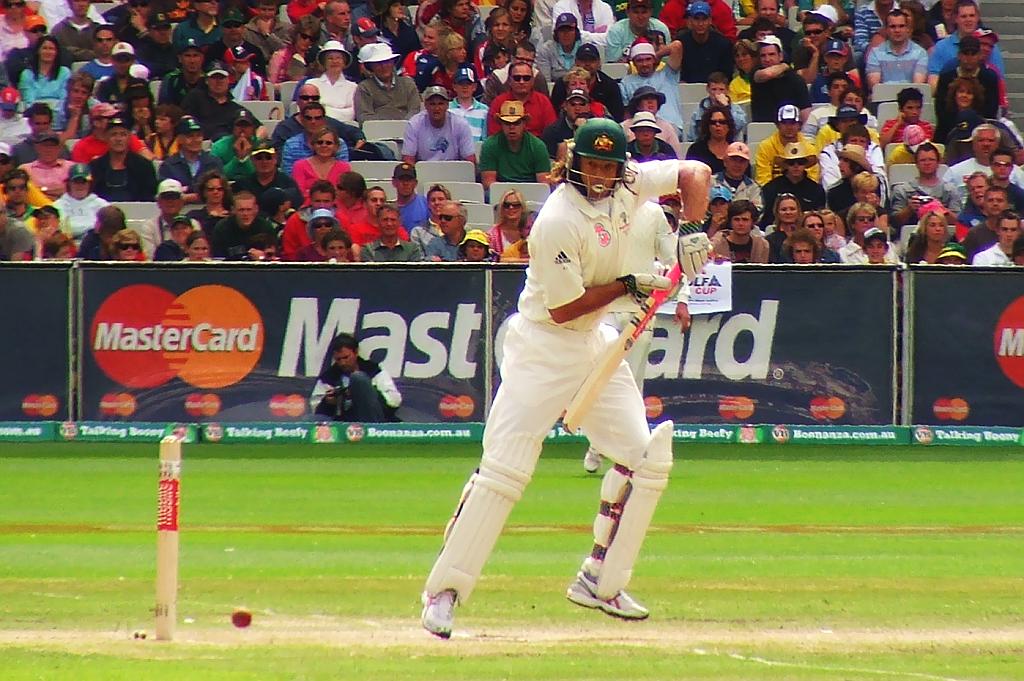
Despite being selected in Australia's 15-member 2007 Cricket World Cup squad, Symonds was unavailable for selection for the initial matches due to a ruptured biceps injury sustained while batting against England on February 2, 2007, during the Commonwealth Bank Tri Series. He underwent surgery and an extensive physical rehabilitation program, causing him to miss the remainder of that tournament as well as the Chappell-Hadlee Trophy in New Zealand, a period during which Australia endured its longest losing streak in over a decade.
Remarkably, Symonds made a relatively quick recovery, returning for Australia's victory in their final preliminary World Cup match against South Africa. Australia advanced to the final, where they faced Sri Lanka. In a rain-affected game, which was shortened to 38 overs per side (or 36, depending on the sources), Symonds scored 23 not out during Australia's innings. He also bowled the final ball of the tournament, sealing Australia's victory in a contest that controversially concluded in near-total darkness.
3.3.4. Controversies and Disciplinary Issues
Andrew Symonds' international career was significantly impacted by several high-profile controversies and disciplinary issues, particularly relating to allegations of racial taunts and alcohol-related incidents.
In 2007, during a One Day Series in Vadodara, Nagpur, and Mumbai, Symonds was subjected to monkey chants from crowds. Although the Board of Control for Cricket in India (BCCI) initially denied the incident in Vadodara, claiming it was a misunderstanding related to the worship of Hanuman, further incidents occurred at other grounds during the series.
Following the Sri Lankan tour of Australia in late 2007, where Symonds showed good form with the bat but sustained an ankle injury that ruled him out of the remainder of the Test series, he returned for the 2007-08 Australia-India series. During the second Test against India on January 2, 2008, Symonds completed his second Test century. He arrived at the crease with Australia in trouble at 119 for 4 wickets. After the quick dismissals of Michael Clarke (1) and Adam Gilchrist (7), Australia found themselves in dire straits at 134 for 6. Symonds and Brad Hogg then forged a record 7th-wicket partnership of 173 runs at the Sydney Cricket Ground (also a record for Australia vs. India), before Hogg was dismissed for 79. By stumps on the first day, Symonds was unbeaten on 137, with Australia at 376 for 7. He eventually finished on 162 not out when the Australians were bowled out for 463. He further went on to score 62 not out in the second innings.
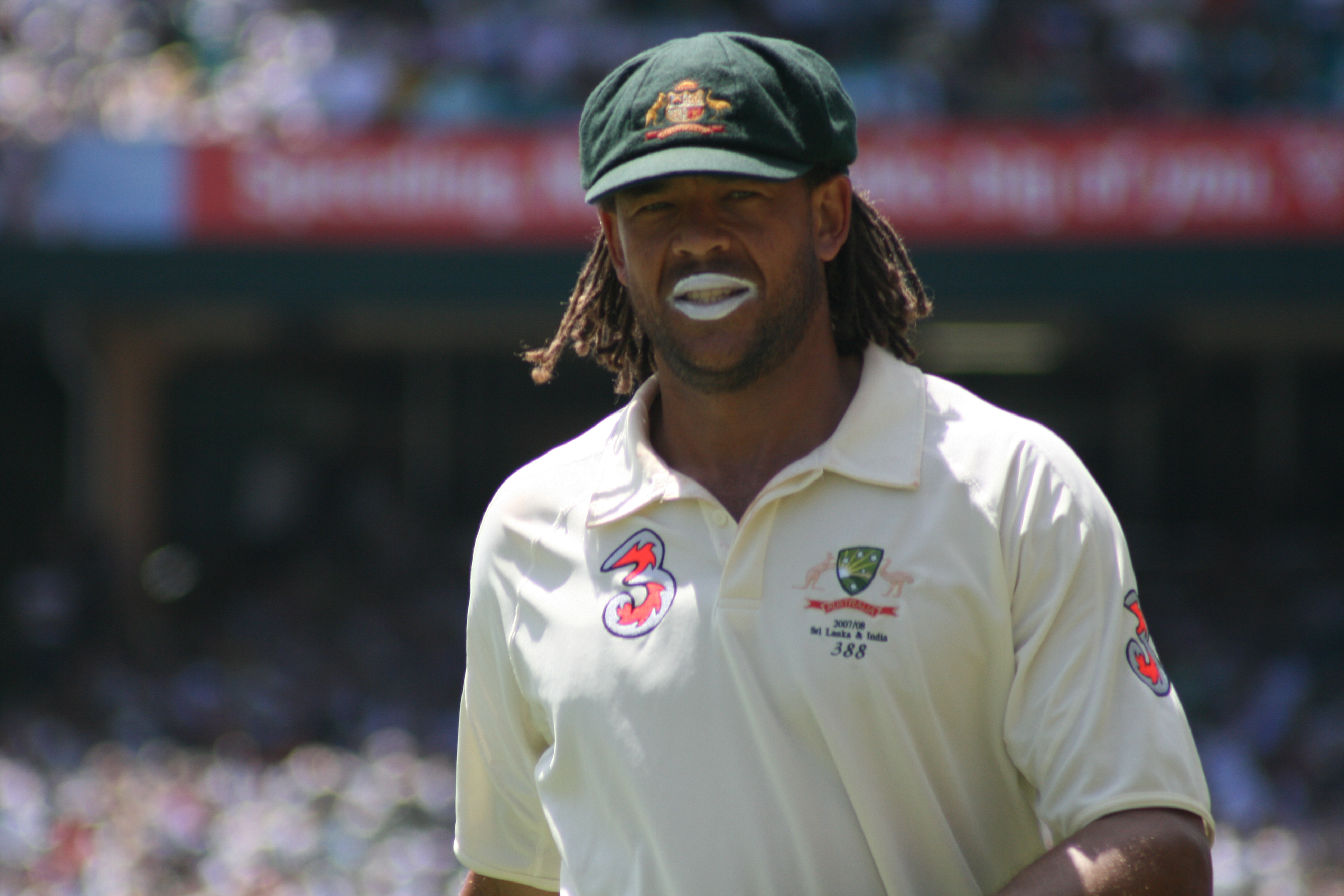
In January 2008, Indian spin bowler Harbhajan Singh received a three-match ban after a complaint that he had racially abused Symonds during the third day of the Second Test at the SCG. It was alleged that Harbhajan called Symonds a "monkey" after Symonds confronted him for touching fellow Australian player Brett Lee. The match referee, Mike Procter, oversaw the case and hearing after the match. However, on January 29, 2008, after an appeal hearing in Adelaide conducted by ICC appeals commissioner John Hansen, the racism charge against Harbhajan Singh was not proven, and the three-Test ban was lifted. A lesser charge (Level 2.8 offence) of using abusive language was applied, and Harbhajan was fined 50% of his match fee. Hansen later acknowledged that he "could have imposed a more serious penalty if he was made aware by the ICC of the bowler's previous transgressions," which included a suspended one-Test match ban. The ICC stated that "database and human errors" contributed to Harbhajan Singh escaping a more severe penalty during his appeal. Hansen also criticized Symonds in his report, accusing him of swearing at Harbhajan after a friendly gesture by the Indian bowler towards Brett Lee. Reports indicated that a letter requesting a downgrading of the charge was signed by senior players including Sachin Tendulkar and Ricky Ponting, and counter-signed by Michael Clarke, Matthew Hayden, and Symonds himself. The audio from the stump microphone was removed by Channel Nine immediately after the alleged incident. In his 2013 autobiography At the Close of Play, Ricky Ponting expressed his disappointment with Cricket Australia for failing to support Symonds, who, despite being the victim of abuse, was portrayed negatively. As Daniel Brettig noted, Symonds, "duly disillusioned," subsequently "drifted from the game via a series of disciplinary problems."
3.3.5. Decline and Retirement from International Cricket
The latter part of Symonds' international career saw a series of incidents and disciplinary actions that ultimately led to its decline and his eventual retirement.
On March 4, 2008, during the second final of the 2007-08 Commonwealth Bank Series against India, Symonds gained attention for physically shoulder-charging a male streaker who had entered the playing arena. Symonds, who had previously considered a career in rugby league with the Brisbane Broncos, could have faced assault charges had the individual pursued legal action.
In August 2008, ahead of Australia's series against Bangladesh in Darwin, Symonds was sent home to Queensland after missing a team meeting while out fishing. Stand-in captain Michael Clarke publicly stated that Symonds needed to "re-evaluate his desire to represent Australia," emphasizing the necessity of "100 per cent" commitment. As further punishment, Symonds was not selected for the Australian tour of India in October 2008.
After Australia's 2-0 Test series loss in India, Symonds was recalled for the Test series against New Zealand in November 2008, though he played no significant role in Australia's victory in the first Test. Following this match, on November 22, Symonds was reportedly involved in a pub brawl with another patron who had attempted to hug him and take a photo. He was subsequently cleared by Cricket Australia to play in the second Test. He then participated in the first two Tests of the next series against South Africa but performed poorly. While he was omitted from the third Test due to injury, many critics also called for his exclusion based on performance. Despite these challenges, he was named in the World ODI XI by the ICC for his performances in 2008.
In January 2009, Symonds gave a controversial interview with sports comedians Roy & HG, in which he made disparaging remarks about the acquisition of New Zealand cricketer Brendon McCullum by the New South Wales Blues for the KFC Twenty20 final, calling McCullum a "lump of shit." He also made inappropriate comments about having dinner at teammate Matthew Hayden's home, implying he enjoyed glancing at Hayden's wife. This interview resulted in a charge for violating the Cricket Australia code of conduct. Following a hearing, he was fined 4.00 K AUD, instructed to work with a psychologist, and indefinitely barred from selection until deemed rehabilitated.
Symonds continued to play for Queensland but remained unselected for Australia, missing three five-match series against South Africa, New Zealand, and South Africa, respectively. He was finally recalled in April 2009 to play ODIs against Pakistan in the United Arab Emirates, but he was not selected for the 2009 Ashes series, with younger all-rounders Shane Watson, Andrew McDonald, and Marcus North being preferred.
In early June 2009, Symonds was sent home from the ICC World Twenty20 tournament in England following "an alcohol-related incident." Cricket Australia chief executive James Sutherland held a press conference to announce Symonds' dismissal, which effectively marked the end of his international cricket career. His Cricket Australia contract was also reviewed and subsequently cancelled. In an interview with Channel Nine's Sixty Minutes in June 2009, Symonds clarified that he was not an alcoholic but rather a "binge-drinker," stating, "I go out and drink hard all in one hit - too fast, too much." Symonds eventually retired from all forms of professional cricket in February 2012, stating his desire to concentrate on his family life.
4. Post-Cricket Activities
After concluding his professional cricket career, Andrew Symonds engaged in various ventures, including a brief involvement in rugby league and several media appearances.
4.1. Rugby League Involvement
Symonds was a passionate supporter of the Brisbane Broncos rugby league team since childhood. In 2002, when his cricket career was facing uncertainties, he even considered making a switch to rugby league. On June 21, 2009, he played a game for the Wynnum Manly Seagulls against an all-star team that featured notable players like Marcus Bai and Steve Renouf. He also spent some time training with the Brisbane Broncos.
4.2. Media Appearances and Commentary
Symonds ventured into the entertainment industry, making a cameo appearance in the 2011 Bollywood film Patiala House. In the same year, he participated as a guest contestant on the Indian reality television series Bigg Boss, where fellow contestant Pooja Mishra, who had previously been eliminated, returned to act as his translator. After his playing career, Symonds also worked as a guest commentator for Big Bash matches during the 2016-17 and 2018-19 seasons.
5. Death
Andrew Symonds was tragically killed in a single-vehicle road accident at Hervey Range, a rural locality outside Townsville, Queensland, on May 14, 2022. He was 46 years old. According to a statement by Queensland Police, Symonds was driving on Hervey Range Road near the Alice River Bridge when his car left the road and rolled over at approximately 10:30 pm local time. He was the sole occupant of the vehicle. Paramedics responded to the scene and attempted to revive him, but Symonds was pronounced dead.
In the immediate aftermath of his death, the global cricket community paid tribute to Symonds. A minute's silence was observed at the start of the final day of the match between two of Symonds' former English clubs, Kent and Surrey, which was underway when he died. A similar tribute was also observed before the commencement of the first day's play of the Test match between Sri Lanka and Bangladesh in Chattogram.
A tribute campaign, dubbed "Fishing Rods for Roy," was launched in memory of Symonds, referencing his well-known passion for fishing. Cricket fans across Australia were encouraged to place fishing rods and cricket balls outside their homes as a nationwide gesture of remembrance, echoing the tributes that followed the death of cricketer Phillip Hughes in 2014.
6. Legacy and Assessment
Andrew Symonds is remembered as one of the most dynamic and impactful all-rounders of his generation, leaving a significant legacy in the world of cricket. His unique blend of aggressive batting, effective bowling, and exceptional fielding made him a rare and valuable asset to any team.
He previously held two world records in first-class cricket: hitting the most sixes in a single innings (16) and in an entire match (20). Both records were set when he was just 20 years old, playing for Gloucestershire against Glamorgan, during which he scored an unbeaten 254 runs in the first innings.
At the time of his death, Symonds was one of only 22 players globally, and one of only three Australians, to have achieved the rare feat of scoring over 5,000 runs and taking more than 100 wickets in One Day International (ODI) cricket. His batting average of 100 runs per inning in World Cup matches was also the highest of any player in that competition, underscoring his pivotal role in Australia's two World Cup triumphs. In 2007, he was recognized for his immense talent when he was named as an all-rounder in Australia's all-time "greatest ODI team."
7. Publications
Symonds contributed to the literary world through his autobiography and as a contributor to another publication.
7.1. Author
- Roy: Going For Broke (2007), co-authored with Stephen Gray.
7.2. Contributor
- Laugh Even Louder! (2007), a book by Camp Quality, to which Symonds contributed.